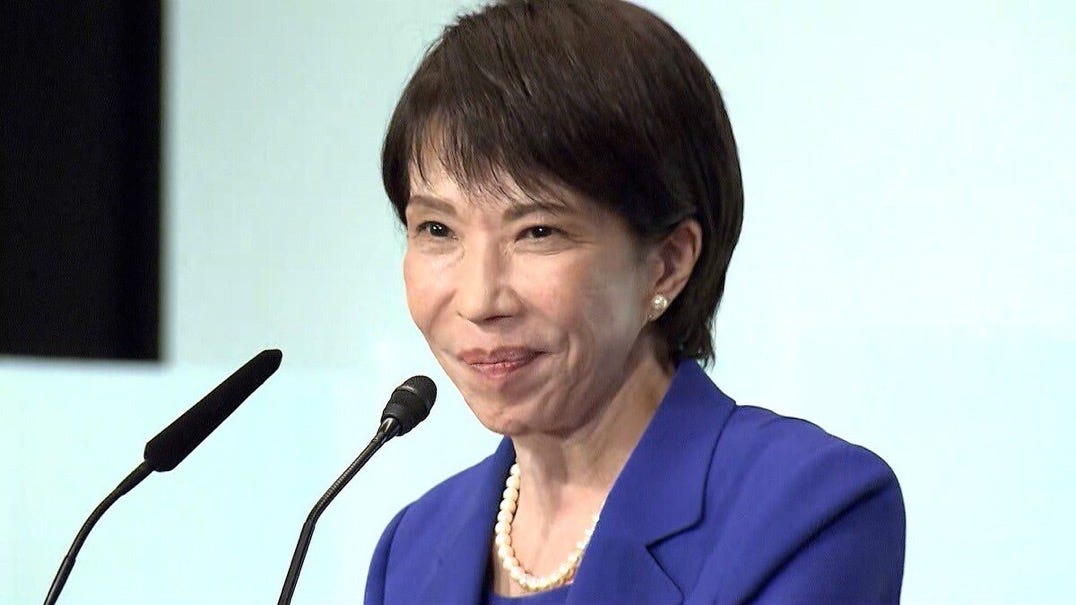Sanae Takaichi: Japan's First Female Prime Minister and the Rise of Ultra-Conservatism
In a landmark decision on October 4, 2025, Sanae Takaichi was elected as the leader of Japan’s ruling Liberal Democratic Party (LDP), positioning her to become the country’s first female prime minister. This historic moment not only marks a significant step towards gender equality in Japanese politics but also signals a potential shift towards conservatism in the nation’s governance. As the world watches, Takaichi’s ascension raises questions about the future direction of Japan, both domestically and internationally.
A Trailblazer in Japanese Politics
Born on March 7, 1961, in Nara, Japan, Sanae Takaichi has been a fixture in Japanese politics since her first election to the House of Representatives in 1993. Over the decades, she has held various ministerial roles, including Minister of Internal Affairs and Communications and Minister of Economic Security, solidifying her reputation as a formidable and influential figure within the LDP. Her election as party leader on October 4, 2025, follows the resignation of Prime Minister Fumio Kishida, creating a leadership vacuum that Takaichi has stepped into with determination and a clear vision.
Takaichi’s journey to this point has been marked by her unwavering commitment to ultra-conservative principles. Since the late 1990s, she has been a vocal defender of Japanese national symbols, such as the Hinomaru flag and the national anthem, against accusations of fascism from the left. Her alignment with the late Prime Minister Shinzo Abe and her membership in the LDP’s right-wing faction have further entrenched her as a champion of traditional values and national sovereignty.
Political Stances and Policy Priorities
Takaichi’s political ideology is deeply rooted in nationalism and traditionalism. She opposes liberal social reforms, such as same-sex marriage and changes to laws requiring married couples to share a surname, arguing that such initiatives could “destroy the social structure based on family units.” Her stance on immigration is equally firm; she believes that increased immigration poses a risk to Japanese society and has called for stricter controls on foreign visitors and laborers to protect Japanese heritage.
Economically, Takaichi is a proponent of Abenomics, the economic vision of Shinzo Abe that emphasizes fiscal stimulus to combat inflation and stagnant wages. However, she also advocates for fiscal discipline, moderating some of her more radical proposals, such as cutting the consumption tax, during her leadership campaign. Her economic policies aim to revive Japan’s growth while addressing the challenges of high public debt.
On the international stage, Takaichi is known for her hawkish stance on security, particularly concerning China. She supports revising Article 9 of the Japanese Constitution to allow for a stronger military presence and has criticized Chinese economic practices, including intellectual property theft. Her regular visits to the Yasukuni Shrine, which honors Japan’s war dead, including convicted war criminals, have complicated relations with neighboring countries like South Korea and China. Despite these tensions, Takaichi prioritizes strengthening the U.S.-Japan alliance, viewing it as crucial for regional stability and aligning her “Japan First” policy with U.S. President Donald Trump’s “America First” agenda.
Implications for Japan and Beyond
Takaichi’s rise to power is not without controversy. Her conservative views and historical revisionism have drawn criticism both domestically and internationally. However, her election also reflects a broader trend within the LDP to reclaim conservative voters who have been drawn to emerging far-right groups like Sanseito. This shift could polarize Japanese politics further, as Takaichi’s policies may alienate more moderate and liberal factions within the country.
Domestically, Takaichi faces the challenge of uniting a party fractured by scandals and internal conflicts. Her leadership will be tested as she seeks to rebuild voter confidence and address pressing issues such as economic stagnation, demographic decline, and regional security threats. Internationally, her tenure could reshape Japan’s role in global affairs, particularly in the context of escalating tensions with China and the ongoing importance of the U.S.-Japan alliance.
Sanae Takaichi’s election as LDP leader and her impending role as Japan’s first female prime minister mark a pivotal moment in the nation’s history. As she navigates the complexities of leading a country at a crossroads, her ultra-conservative agenda will undoubtedly shape Japan’s domestic and foreign policies for years to come. Whether she can balance tradition with progress, nationalism with global cooperation, remains to be seen. One thing is certain: the world will be watching closely as Japan embarks on this new chapter under Takaichi’s leadership.

